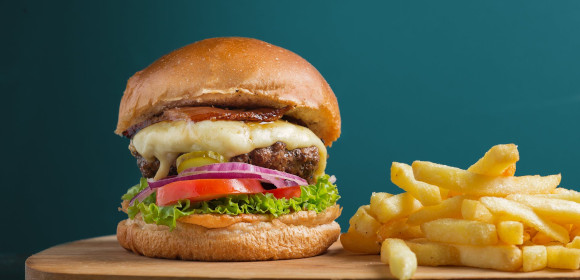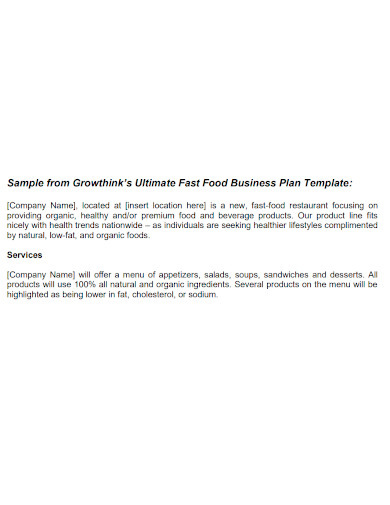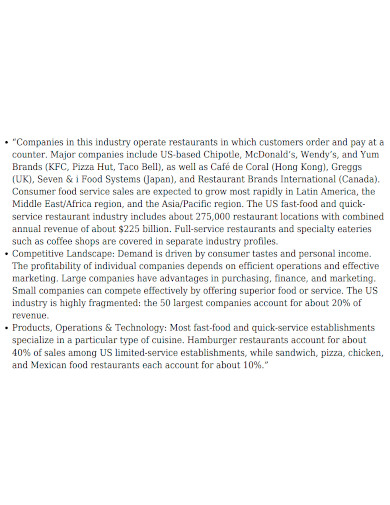One of the most successful and growing businesses in the market are fast food chains. Let’s face it a number of us enjoy food that is all prepared and served quickly. And it is quite convenient since a number of fast food chain cater to a wide extent of services such as sit-down restaurants, counter service, take-out, drive-thru, and delivery. More so it’s inexpensive and the food taste good. To be able to maintain their good service and quality of food, like most companies fast food chains also require business planning. Learn more about fast food business plan as you continue reading this article and don’t forget to check out our free fast food business plan samples below:
3+ Fast Food Business Plan Samples
1. Fast Food Business Plan Sample
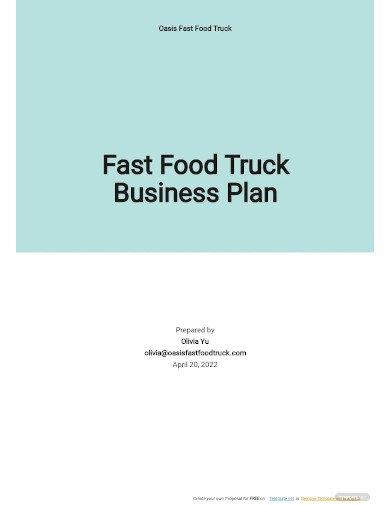
2. Printable Fast Food Restaurant Business Plan
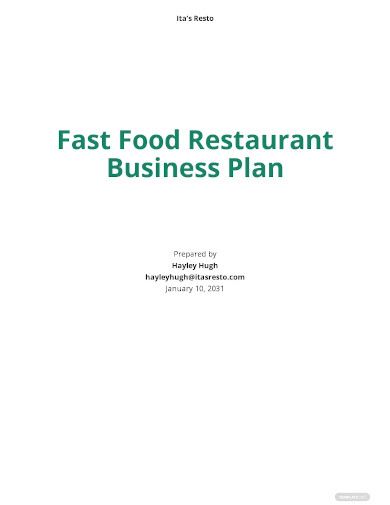
3. Ultimate Fast Food Business Plan
4. General Fast Food Business Plan
What Is a Fast Food Business Plan?
Business Plans is a part of a company’s task to help guide them how to operate and promote their products and services. These documents contain the goals of a business, the methods for attaining those goals, and the time-frame for the achievement of the goals. And like most companies, those in the food or restaurant industries such as Fast Food Restaurant also formulate business plans to maneuver their goals, objectives and more importantly their food products to attain revenue and market share.
How to Make a Fast Food Business Plan?
A business plan provides a framework of your fast food restaurant to stand out, and lays out your growth plan for the next couple of years. It explains your business goals and your strategy for reaching them. It also includes market research to support your plans. Business plans can also help you get funding or bring on new business partners. Investors want to feel confident they’ll see a return on their investment. In order to achieve this an effective fast food business plan should include an executive summary, products and services, marketing strategy and analysis, financial planning, and a budget. Continue reading below as we explain the the step by step process of a fast food business plan model:
1. Executive Summary
This is the first part of your business plan where you give an introduction about your idea and concept, what your company is all about and why it will be successful. A executive summary is all about introducing potential investors to your general concept and outlining the different points you will be discussing more in detail. Even small fast food restaurants needs a business plan, but for a more in depth details you can include a mission statement, your product or service, and basic information about your company’s leadership team, employees, and location. Financial information and long term growth plans if you plan on attracting investors.
2. Company Description
This is the part of your fast food restaurant business plan where you start getting into the specifics. Use your company description to provide detailed information about your company. Go into detail about the problems your fast food business solves. Be specific, and list out your target customers, organization, or businesses your company plans to serve. Explain the competitive advantages that will make your business a success. Your store location or any particular experts in your team. Your company description is the place to boast about your strengths.
3. Market Analysis
In this portion, define the general conditions on the market you wish to penetrate. Aggressive market research will show you what other businesses are doing and what their strengths are. In your market research, look for trends and themes. Discuss about your proposed location and competition. This is the part of your business plan where you lay out where you plan to open up and why that would be a good location to reach your customers. You may have a wonderful menu and good food, but in the end of the day a strategic location can make a difference.
4. Organization and Management
For large scale fast food restaurants, create an organizational chart to lay out who’s in charge of what in your company. Show how each person’s unique experience will contribute to the success of your venture. Also indicate the legal structure of your company whether you have or intend to incorporate your business as corporation, form a general or limited partnership, or if you’re a sole proprietor or limited liability company.
5. Products and Services
Describe in details what type of food you plan to sell and offer to the public. You should also provide a sample menu and drinks menu and explain how these products would benefit your target customers. If you food products are unique you can include your plans for intellectual property, like copyright or patent filings.
6. Marketing Strategy and Analysis
Your marketing strategy should adapt on what’s currently on trend to be able for your to successful launch your fast food restaurant business. This maybe through social media platforms, radio or tv commercials, flyers and etc. Aside from that, you strategy should evolve and change to fit your unique needs. Your main priority is to describe how you’ll attract and retain customers. You’ll also describe how a sale will actually happen.
7. Financial Planning
Describe your financial projections and prospective financial outlook for the next five years. This should include Financial Statements such as Profit and Loss Statement and a Break Even Analysis, Capital Expenditure Budgets and an Expected Cash Flow analysis. You may also include an investment plan if you are planning to attract investors.
8. Operating Plan
Discuss the daily operations that you would expect to happen in your fast food restaurant. In this portion of the business plan describe the hiring process of your staff and how to manage employees and on boarding with vendors or suppliers. If you have any delivery or take out service, you have want to include this operation in full detail as well as the payment method.
9. Appendix
You may want to add a bit of your supporting documents that is relevant to your restaurant business. This may be product pictures, letters of reference, licenses, permits, patents, legal documents, and other contracts.
FAQs
What Is a Target Market Example?
This is a group of customers that has a similar need for a product or service, money to purchase the product or service and willingness to buy or avail of the product or services.
Who Reads a Business Plan?
Within the company, relevant employees are given the outline of summary of the business plans, for important outsiders who may read a company’s business plan include investors, lenders, suppliers and executives who may be joining the company.
What Is a Management Team?
These consist of a individuals at the highest level of management of an organization who have the day-to-day tasks of managing that organization and set up strategies to align with their goals.
Opening up a fast food restaurant business or any business for that matter is never just a simple task. It takes a lot of careful planning and consideration. With a business plan this could help entrepreneurs focus on the specific steps necessary for them to make business ideas succeed, but it also helps them to achieve short-term and long-term objectives. To test a business idea and see their probable effect on the company, and measuring performance against goals or objectives.
Related Posts
FREE 9+ 30-Day Marketing Plan Samples in PDF | MS Word | Apple Pages | Google Docs
FREE 3+ Sales Team Action Plan Samples in PDF | MS Word | Apple Pages | Google Docs
Marketing Plan For Small Business Samples
FREE 7+ Fashion Business Plan Samples in PDF
FREE 10+ Sprint Planning Samples In MS Word | Google Docs | PDF
FREE 10+ Wedding Planning Samples in MS Word | Apple Pages | Powerpoint | PDF
FREE 9+ Monthly Study Planner Samples in PSD | Illustrator | InDesign | PDF
FREE 9+ Sample Curriculum Planning Templates in PDF | MS Word
FREE 10+ Teacher Development Plan Samples in MS Word | Google Docs | Apple Pages | PDF
FREE 10+ Basketball Practice Plan Samples in PDF
FREE 12+ School Business Plan Samples in PDF | MS Word | Apple Pages | Google Docs
FREE 7+ Client Strategic Plan Samples in PDF | MS Word
FREE 11+ Trucking Business Plan Templates in PDF | MS Word | Google Docs | Pages
FREE 7+ Small Hotel Business Plan Samples PDF | MS Word | Apple Pages | Google Docs
FREE 14+ Bakery Business Plans in MS Word | PDF | Google Docs | Pages
